terça-feira, 21 de novembro de 2017
Low Voltage Ride-Through of Single-Phase Transformerless Photovoltaic Inverters Yongheng Yang Frede Blaabjerg Huai Wang Aalborg University, Aalborg Denmark
Y. Yang, F. Blaabjerg, and H. Wang "Low voltage ride-through of single-phase transformerless photovoltaic inverters,” IEEE Trans. Industry Applications, in press.
Abstract
Transformerless photovoltaic (PV) inverters are going to be more widely adopted in order to achieve high efficiency, as the penetration level of PV systems is continuously booming. However, problems may arise in highly PV-integrated distribution systems. For example, a sudden stoppage of all PV systems due to anti-islanding protection may contribute to grid disturbances. Thus, standards featuring with ancillary services for the next generation PV systems are under a revision in some countries. The future PV systems have to provide a full range of services as what the conventional power plants do, e.g. Low Voltage Ride-Through (LVRT) under grid faults and grid support service. In order to map future challenges, the LVRT capability of three mainstream single-phase transformerless PV inverters under grid faults are explored in this paper. Control strategies with reactive power injection are also discussed. The selected inverters are the full-bridge inverter with bipolar modulation, the full-bridge inverter with DC bypass and the Highly Efficient and Reliable Inverter Concept (HERIC). A 1 kW single-phase gridconnected PV system is analyzed to verify the discussions. The tests confirmed that, although the HERIC inverter is the best candidate in terms of efficiency, it is not very special feasible in case of a voltage sag. The other two topologies are capable of providing reactive current during LVRT. A benchmarking of those inverters is also provided in this paper, which offers the possibility to select appropriate devices and to further optimize the transformerless system.
ORIGINAL URL
http://vbn.aau.dk/files/102349282/77954_tia.2013.2282966.pdf
domingo, 19 de novembro de 2017
A NOVEL FORWARD SINGLE-STAGE HIGH POWER CORRECTION CONVERTER WITH CONTROLLER DESIGN - HSUEH -CHAN CHEN
ABSTRACT
In this thesis ,the principle of the graft scheme is dicussed.By means of graft scheme ,the buck-boost and forward converter are combined to create a novel forward single-stage high power correction (HPFC) converter. The main advantages for the proposed converter are unity power factor,low voltage stress of the bulk capcitor,anthe output voltage regulation.
LINK
http://www.mediafire.com/file/m46m6ryzz53458r/A_NOVEL_FORWARD_SINGLE-STAGE_HIGH_POWER_CORRECTION_CONVERTER.pdf
sábado, 18 de novembro de 2017
Analysis of Discharge Lamp Driving Characteristics using PSpice Jeong-Ho Cho Department of Electrical Engineering, Graduate School of Industry, Pusan National University
Analysis of Discharge Lamp Driving Characteristics using PSpice Jeong-Ho Cho Department of Electrical Engineering, Graduate School of Industry, Pusan National University
ABSTRACT
A new PSpice dynamic fluorescent lamp model has been developed which describes the non-linear resistance of fluorescent lamps operating at high-frequency. The model is based on exponential approximation that represents the equivalent resistance variation as function of power, constructed, by experimental results for several power levels. Simulation and experimental results are presented to verify the feasibility of the model and, moreover, and electronic ballast example using the proposed model is presented to further demonstrate its applications.
segunda-feira, 6 de novembro de 2017
WORKSHOP: CONEXÃO DE FONTES RENOVÁVEIS E SEUS IMPACTOS PARA A QUALIDADE DE ENERGIA ELÉTRICA -São Paulo - 5 de Dezembro de 2017
São Paulo - 5 de Dezembro de 2017
Auditório do Prédio da Engenharia Elétrica – Av. Prof. Luciano Gualberto, Travessa 3, nº 158, Escola Politécnica da USP.
A SBQEE em parceria com o Laboratório de Redes Elétricas Avançadas (LGrid) realizará em São Paulo workshop voltado para empresas e profissionais do setor elétrico nacional sobre os impactos da conexão de fontes renováveis de energia, como eólicas e fotovoltaicas, para a qualidade de energia elétrica. O evento contará com palestras sobre os principais fenomenos elétricos observados nestas conexões, estudoas para detecção e mitigação, aspectos sobre a medição no ponto de conexão, além de casos reais.
Acesse o mapa do local do evento https://goo.gl/maps/9bcFmMitzHt
INFORMAÇÃO COMPLETA
http://www.sbqee.org.br/sbqee/eventos/workshop;jsessionid=b825jj4n82pw
sábado, 4 de novembro de 2017
quinta-feira, 2 de novembro de 2017
REVISTA PC MAGAZINE BRASIL-JULHO DE 1998- NOBREAKS/WINDOWS98-VOLUME8-NUMERO 7
sábado, 28 de outubro de 2017
TRASFORMATORE-Gabriele Giovanni Padovano Universit`a degli studi di Pisa - FACOLTA DI INGEGNERIA
TRASFORMATORE
Universit`a degli studi di Pisa FACOLTA DI INGEGNERIA
Corso di Laurea Triennale in Ingegneria Elettrica A cura dello studente Gabriele Giovanni Padovano Con la supervisione del prof. Luca Sani Anno Accademico 2011/12
LINK EN LA WEB: http://www.dsea.unipi.it/Members/saniw/didattica/Macchine%20elettriche/trasf_parte_1
quarta-feira, 25 de outubro de 2017
segunda-feira, 23 de outubro de 2017
A New High Efficient Transformerless Inverter for Single Phase Grid-tied Photovoltaic System with Reactive Power Control -Monirul Islam Power Electronics and Renewable Energy Research Laboratory (PEARL) Department of Electrical Engineering University of Malaya
A New High Efficient Transformerless Inverter for Single Phase Grid-tied Photovoltaic System with Reactive Power Control
Monirul Islam Power Electronics and Renewable Energy Research Laboratory (PEARL)
Department of Electrical Engineering University of Malaya Kuala Lumpur, Malaysia
Abstract—There has been an increasing interest in transformerless inverter for grid-tied photovoltaic (PV) system due to low cost, high efficiency, less weight, etc. Therefore, many transformerless topologies have been proposed and verified with real power injection only. Recently, almost every international regulation has imposed that a definite amount of reactive power should be handled by the grid-tied PV inverter. According to the standard VDE-AR-N 4105, grid-tied PV inverter of power rating below 3.68kVA, should attain power factor (PF) from 0.95 leading to 0.95 lagging. In this paper, a new high efficient transformerless topology is proposed for grid-tied PV system. The new topology structure and detail operation principle with reactive power flow is described. The proposed circuit structure does not lead itself to the reverse recovery issues which allow utilizing MOSFET switches to increase the overall efficiency. Finally, to validate the proposed topology, a 1kW laboratory prototype is built and tested. The experimental results show that the proposed topology can inject reactive power into utility grid without any additional current distortion and leakage current. The maximum efficiency and European efficiency of the proposed topology is measured and found to be 98.54% and 98.27%, respectively.
Keywords—common mode, converter, high efficient, leakage current, reactive power, transformerless.
LINK ORIGINAL WEB
https://umexpert.um.edu.my/file/publication/00005361_125971.pdf
sábado, 21 de outubro de 2017
Analysis and Design of Single-Phase Photovoltaic Grid-Connected Inverter - Jaehwe Shim Department of Embedded SW Graduate School, Kwangwoon University Seoul, Korea
Analysis and Design of Single-Phase Photovoltaic Grid-Connected Inverter
Jaehwe Shim Department of Embedded SW
Graduate School, Kwangwoon University Seoul, Korea
Abstract
This paper proposed a new maximum power point tracking(MPPT) algorithm to find true maximum power point(MPP) for mismatched PV(Photovoltaic) modules. And also, various anti-islanding algorithms for grid-connected PV system were analyzed comparatively. At first, in order to have PV PCS maximum power generation efficiency, maximum power point trackers are used to operate a solar PV panel at its MPP. A number of MPPT algorithms has been used in the past such as P&O, IncCond, etc. But these algorithm cannot track true maximum power point under mismatched PV modules caused by clouds, shadow, and snow. The multiple local maxima can be existed on PV characteristic curve under mismatched PV modules. Therefore, the proposed MPPT algorithm, which is capable of tracking the true MPP under mismatched PV, is verified by simulation and experiment. In addition, this paper covered various anti-islanding methods for distributed grid-connected PV PCS. The islanding is that the phenomenon wherein the distributed PV PCS does not detect the interruption due to the power failures and faults, but dose continue operation. Islanding phenomenon can cause to have maintenance engineer in danger and to have application load damaged. Therefore grid-connected PV PCS must be disconnected while detecting the islanding phenomenon within the specified time, which secures safety and reliability. In this paper past various anti-islanding algorithms were explained and verified validity comparatively. For the validity of the proposed MPPT algorithm, 3kW PV system was designed with connected PV simulator.
LINK
http://www.mediafire.com/file/zxhzxcphv8p7la1/Analysis_and_Design_of_Single_Phase_Photovoltaic_Grid_Connected_Inverter.pdf
Power Conversion Technology for Grid-connected PV inverter-Woo-Jun Cha (차 우 준) Department of Electrical Engineering Pohang University of Science and Technology
Power Conversion Technology for Grid-connected PV inverter
Woo-Jun Cha (차 우 준)
Department of Electrical Engineering
Pohang University of Science and Technology 2015
ABSTRACT
This thesis proposes hardware circuits and control algorithm of grid-connected photovoltaic (PV) inverters having high efficiency. PV inverter can be classified into singlephase and three-phase inverter according to power capacity. A micro-inverter system is proposed for the single-phase inverter. This system is composed of step-up dc-dc converter that uses an active-clamp circuit with a series-resonant voltage doubler and a high efficiency inverter with single-switch-modulation. During the step-up dc-dc stage, the active-clamp circuit provides zero-voltage switching turn-on, recycles the energy stored in the leakage inductance of the transformer, and limits switch voltage stress. A series-resonant voltage doubler is used on the transformer secondary side to remove the reverse-recovery problem of the rectifier diodes. During the inverter stage, to improve efficiency and reliability in the proposed inverter, only single switch is modulated at switching frequency without shoot-through problem. This whole process minimizes power losses and eliminates a mismatch of a capacity between the PV panel and PV inverter, so the proposed micro-inverter is suitable for use in a single-phase grid connected PV inverter. A prototype design and experimental results are given to verify the proposed system. A novel space-vector modulation (SVM) for a three-phase PV inverter with simple software implementation is proposed. The conventional SVM algorithm for the three-phase PV inverter requires complex computations, such as square root and arctangent, and a sector selection algorithm. The proposed SVM algorithm can determine directly on-state times of switches without complex computations and complex sector selection algorithm. Experimental results show high performance of the proposed algorithm for the three-phase PV inverter.
LINK
http://www.mediafire.com/file/u6wnmz2xww2x80f/POWER_CONVERSION_TECHNOLOGY_FOR_CONNECTED_PV_INVERTER.pdf
Assinar:
Postagens (Atom)












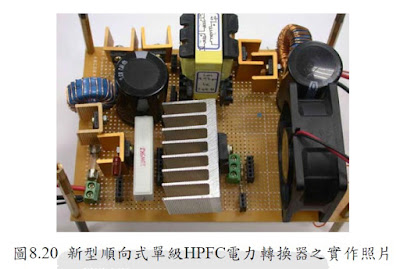
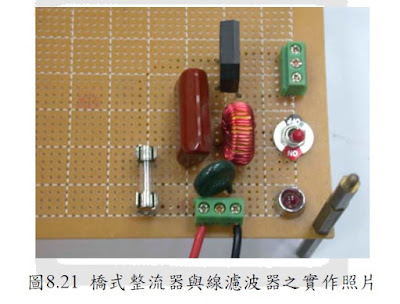

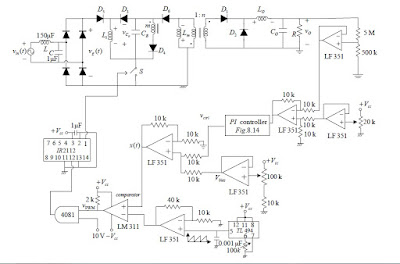







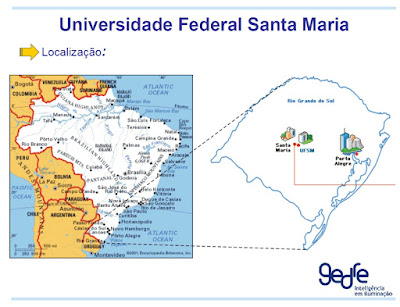




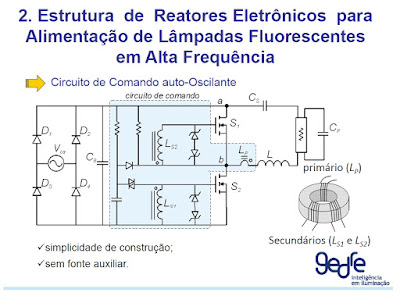



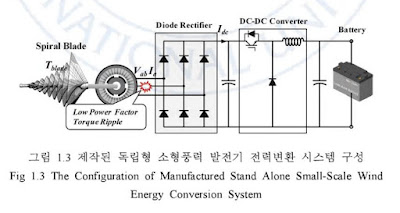


















































 JOSIL ARTISTA PLASTICO FORTALEZA CEARA BRASIL AV.HERACLITO GRAÇA 41 TEL(85)32542378
JOSIL ARTISTA PLASTICO FORTALEZA CEARA BRASIL AV.HERACLITO GRAÇA 41 TEL(85)32542378
















